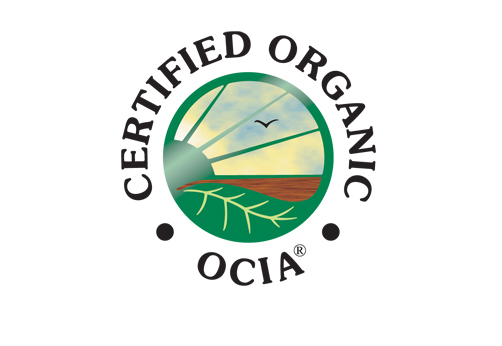

OCIA Specialty Crop Standards - Lake Grown Wild Rice

OCIA certification arises from the following basic principles: Organic certification is a system of institutionalized trust, allowing consumers to identify and reward conscientious stewards of our natural heritage. Organic certification is a privilege to be earned rather than a right to be withdrawn. No one knows the farm system better than a farmer. Organic production focuses on natural processes and their management: materials and products are an adjunct to, not a replacement for, effective management. Diversity, interaction, adaptability and competition are characteristic, natural elements to be respected in the organic system. The organic farming system should be structured and managed to ensure that soil loss through erosion and other degradation does not exceed natural replacement rates. Organic operations must take measures to maintain and/or improve landscape and enhance biodiversity.The producers, handlers, and consumers depend on processors of organic products to preserve or enhance the original nutritive value for the type of product, while continuing producer efforts to minimize contamination of the product and the environment. The audit trail is an integral part of organic certification. The use of products made from organisms that have been modified by genetic engineering techniques (as defined in the Materials List) is prohibited and is in direct violation of the philosophy and organic intent of OCIA. Nanotechology applied as an extension to the process of genetic modification referred to in 1.2.10 is prohibited within the organic system.The use of manufactured nanoparticles or nanostructures is prohibited. *Notwithstanding the above, the use of naturally occurring nanoparticles, as in traditional biodynamic practice, is allowed. The use of artificial nanoscale processes is prohibited within the organic system.
Applied Standards
The lake/river water and sediments used for lake grown wild rice production must be free of significant contamination from residential, municipal, commercial, or industrial waste, emissions, tailings or affluent. Harvesting areas must not be located within: 1. twenty miles (34 kilometers) of any nuclear facility. 2. three miles (5 kilometers) of any industrial discharge area. 3. three miles (5 kilometers) of any city or town sewage discharge. It is the producer’s responsibility to report to OCIA and the inspector any other possible source of contamination. These will be examined on a case-by-case basis by the International Office to assess the possible risk of contamination and to determine whether the crop is certifiable. As the lake grown wild rice is a water-based crop, the water must be in compliance with government regulations for water quality. An annual water test is not required, however the International Office can require a water test to be conducted if a contamination problem is perceived. A plan for monitoring and testing the lake grown wild rice, water, and sediment must be submitted yearly and approved by the International Office prior to certification. This plan must be specific to the area in which the rice harvest is being conducted. The water and sediments shall be free of high concentrations of indigenous, naturally occurring compounds which may be harmful to human health. Management of sediment quality via fertilizing, liming or the addition of soil/sediment amendments of any kind is prohibited. The use of pesticides, growth stimulants, desiccants, and all other types of agrochemicals are prohibited. The lake grown wild rice harvest must attempt to allow the area to be self-sustaining. This must be verified through harvesting practices and harvesting records from previous years. If re-seeding is necessary, the seed must be organic. Uncertified, non-GMO seed can be used if organic seed is documented to be unavailable from at least three (3) sources.
The processing of lake grown wild rice must be handled in compliance with Section 5 (Organic Processing) of the current OCIA International Standards. In addition, the following Standards must be addressed: A lake grown wild rice processing enterprise seeking organic certification shall, prior to initial certification, submit a lake grown wild rice Processing Organic System Plan which includes the following elements: A general description of the handling, drying, curing, processing and storage procedures. A detailed plant site and plant diagram. This includes the structural pest management plan and pest control plan as outlined in Section 5 of the OCIA Standards. A schematic flow chart identifying all the equipment, processing and holding facilities in the plant. This plan will need to be updated yearly and supplied to the International Office with the certification file for review. An Internal Quality Assurance System must be in place and documented. This must address all potential areas of contamination to the OCIA Certified product including: Commingling of OCIA Certified lake grown wild rice with non-OCIA Certified wild rice. Containers and packaging. Sanitizers, boiler chemicals, processing aids, prohibited substances used in and around the facility. Transportation and storage. This includes storage records and clean-truck affidavits. Pest control methods and substances. Enzymes and food spoilage microorganisms. Prohibited handling and processing procedures, including, but not limited to, the use of irradiation.
